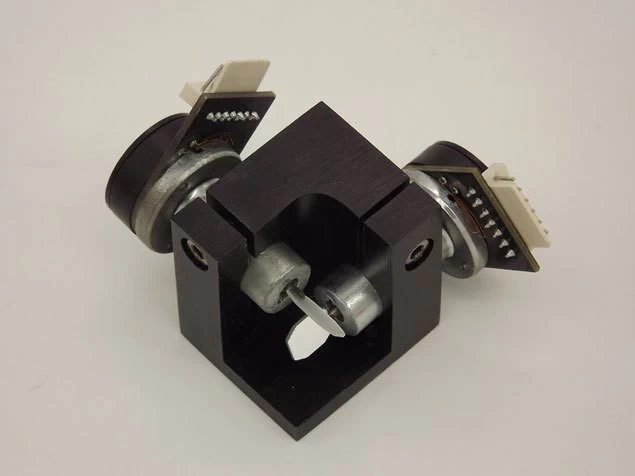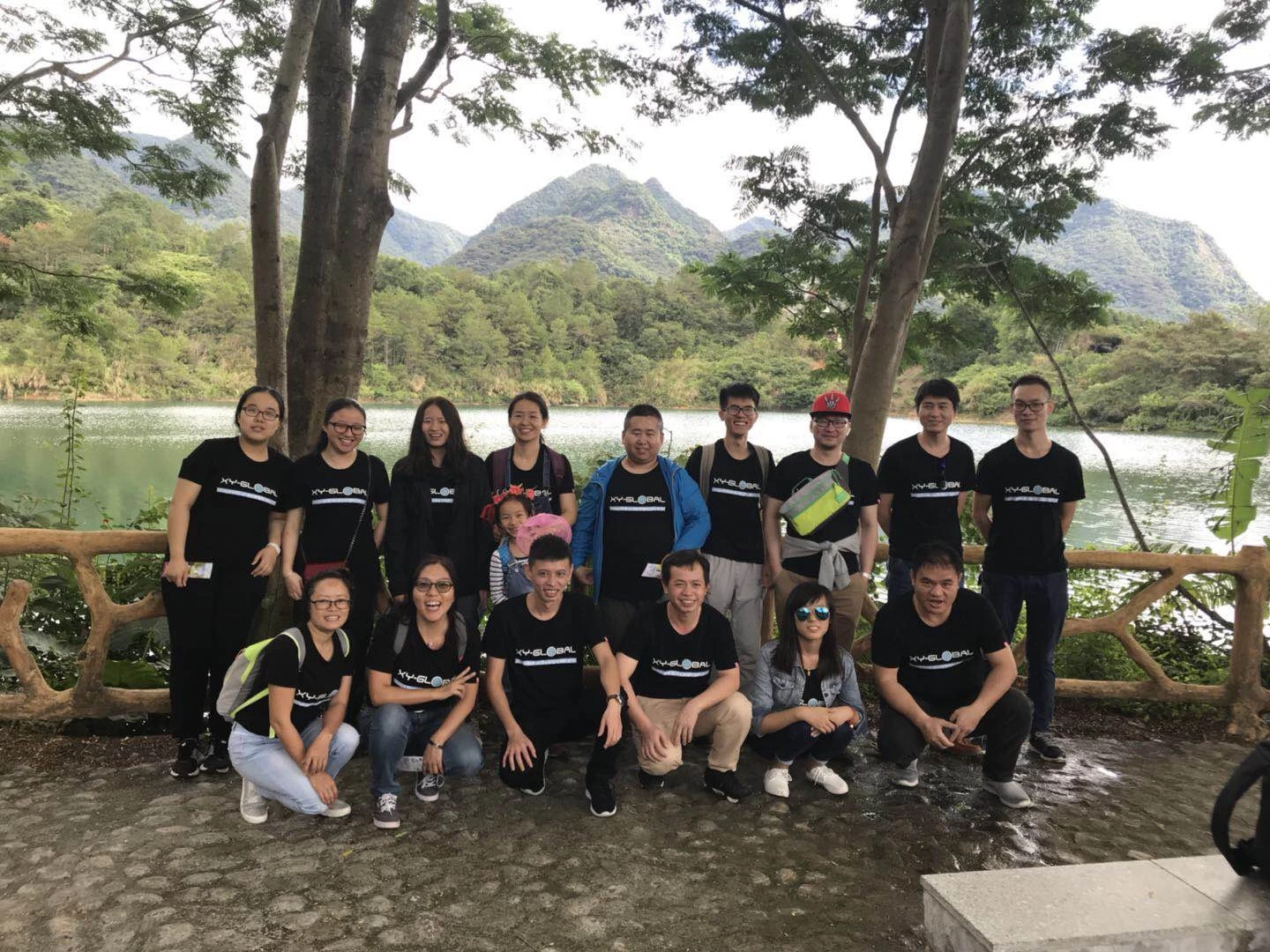The Application of Laser scanning
Edith
www.xy-global.com
2018-08-28 17:29:17
In modern surveying, the general meaning of laser scanning is the controlled deflection of laser beams, visible or invisible.
Within the field of 3D object scanning, laser scanning (also known as lidar) combines controlled steering of laser beams with a laser rangefinder. By taking a distance measurement at every direction the scanner rapidly captures the surface shape of objects, buildings and landscapes. Construction of a full 3D model involves combining multiple surface models obtained from different viewing angles, or the admixing of other known constraints. Small objects can be placed on a revolving pedestal, in a technique akin to photogrammetry.

Applications
3D object scanning
3D object scanning allows enhancing the design process, speeds up and reduces data collection errors, saves time and money, and thus makes it an attractive alternative to traditional data collection techniques. 3D scanning is also used for mobile mapping, surveying, scanning of buildings and building interiors, and in archaeology.
Material processing
Depending on the power of the laser, its influence on a working piece differs: lower power values are used for laser engraving and laser ablation, where material is partially removed by the laser. With higher powers the material becomes fluid and laser welding can be realized, or if the power is high enough to remove the material completely, then laser cutting can be performed. Modern lasers can cut steel blocks with a thickness of 10 cm and more or ablate a layer of the cornea that is only a few micrometers thick.
The ability of lasers to harden liquid polymers, together with laser scanners, is used in rapid prototyping, the ability to melt polymers and metals is, with laser scanners, to produce parts by laser sintering or laser melting.
The principle that is used for all these applications is the same: software that runs on a PC or an embedded system and that controls the complete process is connected with a scanner card. That card converts the received vector data to movement information which is sent to the scanhead. This scanhead consists of two mirrors that are able to deflect the laser beam in one level (X- and Y-coordinate). The third dimension is - if necessary - realized by a specific optic that is able to move the laser's focal point in the depth-direction (Z-axis).
Scanning the laser focus in the third spatial dimension is needed for some special applications like the laser scribing of curved surfaces or for in-glass-marking where the laser has to influence the material at specific positions within it. For these cases it is important that the laser has as small a focal point as possible.
For enhanced laser scanning applications and/or high material throughput during production, scanning systems with more than one scanhead are used. Here the software has to control what is done exactly within such a multihead application: it is possible that all available heads have to mark the same to finish processing faster or that the heads mark one single job in parallel where every scanhead performs a part of the job in case of large working areas.
Barcode readers
Many barcode readers, especially those with the ability to read bar codes at a distance of a few meters, use scanned laser beams. In these devices, a semiconductor laser beam is usually scanned with the help of a resonant mirror scanner. The mirror is driven electromagnetically and is made of a metal-coated polymer.
Space flight
When a space transporter has to dock to the space station, it must carefully maneuver to the correct position. In order to determine its relative position to the space station, laser scanners built into the front of the space transporter scan the shape of the space station and then determine, through a computer, the maneuvering commands. Resonant galvanometer scanners are used for this application.
Laser shows
Laser light shows typically uses two galvanometer scanners on a X-Y configuration to draw patterns or images on walls, ceilings or other surfaces including theatrical smoke and fog for entertainment or promotional purposes.

Within the field of 3D object scanning, laser scanning (also known as lidar) combines controlled steering of laser beams with a laser rangefinder. By taking a distance measurement at every direction the scanner rapidly captures the surface shape of objects, buildings and landscapes. Construction of a full 3D model involves combining multiple surface models obtained from different viewing angles, or the admixing of other known constraints. Small objects can be placed on a revolving pedestal, in a technique akin to photogrammetry.

Applications
3D object scanning
3D object scanning allows enhancing the design process, speeds up and reduces data collection errors, saves time and money, and thus makes it an attractive alternative to traditional data collection techniques. 3D scanning is also used for mobile mapping, surveying, scanning of buildings and building interiors, and in archaeology.
Material processing
Depending on the power of the laser, its influence on a working piece differs: lower power values are used for laser engraving and laser ablation, where material is partially removed by the laser. With higher powers the material becomes fluid and laser welding can be realized, or if the power is high enough to remove the material completely, then laser cutting can be performed. Modern lasers can cut steel blocks with a thickness of 10 cm and more or ablate a layer of the cornea that is only a few micrometers thick.
The ability of lasers to harden liquid polymers, together with laser scanners, is used in rapid prototyping, the ability to melt polymers and metals is, with laser scanners, to produce parts by laser sintering or laser melting.
The principle that is used for all these applications is the same: software that runs on a PC or an embedded system and that controls the complete process is connected with a scanner card. That card converts the received vector data to movement information which is sent to the scanhead. This scanhead consists of two mirrors that are able to deflect the laser beam in one level (X- and Y-coordinate). The third dimension is - if necessary - realized by a specific optic that is able to move the laser's focal point in the depth-direction (Z-axis).
Scanning the laser focus in the third spatial dimension is needed for some special applications like the laser scribing of curved surfaces or for in-glass-marking where the laser has to influence the material at specific positions within it. For these cases it is important that the laser has as small a focal point as possible.
For enhanced laser scanning applications and/or high material throughput during production, scanning systems with more than one scanhead are used. Here the software has to control what is done exactly within such a multihead application: it is possible that all available heads have to mark the same to finish processing faster or that the heads mark one single job in parallel where every scanhead performs a part of the job in case of large working areas.
Barcode readers
Many barcode readers, especially those with the ability to read bar codes at a distance of a few meters, use scanned laser beams. In these devices, a semiconductor laser beam is usually scanned with the help of a resonant mirror scanner. The mirror is driven electromagnetically and is made of a metal-coated polymer.
Space flight
When a space transporter has to dock to the space station, it must carefully maneuver to the correct position. In order to determine its relative position to the space station, laser scanners built into the front of the space transporter scan the shape of the space station and then determine, through a computer, the maneuvering commands. Resonant galvanometer scanners are used for this application.
Laser shows
Laser light shows typically uses two galvanometer scanners on a X-Y configuration to draw patterns or images on walls, ceilings or other surfaces including theatrical smoke and fog for entertainment or promotional purposes.




















